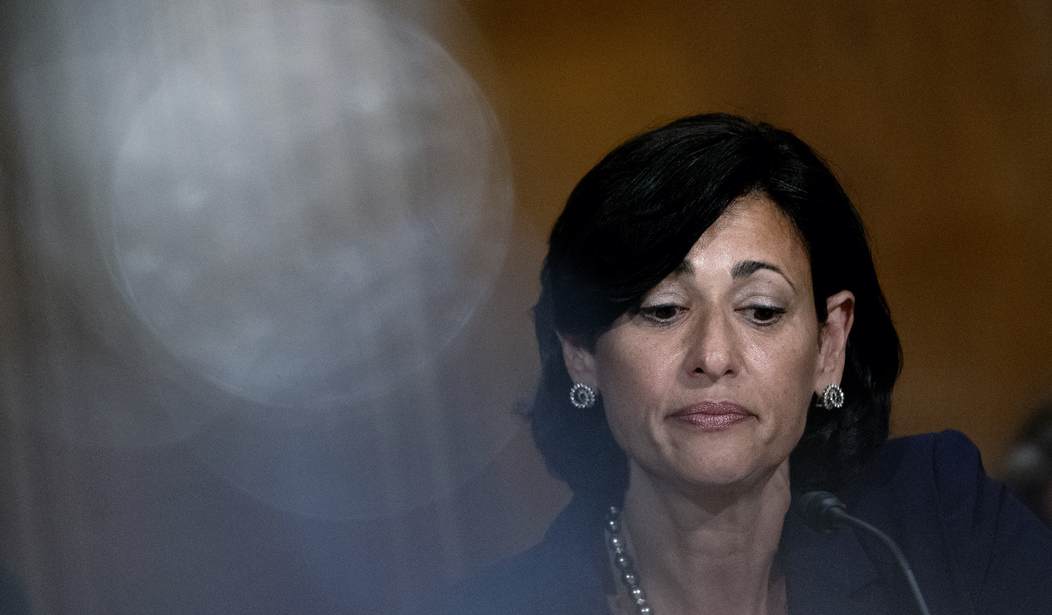I don’t think so but there’s hype about it online this afternoon. Did the CDC set a new policy for 160 million Americans who have been vaccinated with Pfizer, Moderna, or Johnson & Johnson based on data collected from foreigners who … didn’t receive any of those products?
The mRNA vaccines are more effective against the virus than anything else out there. Maybe the viral load in people immunized with Pfizer or Moderna is meaningfully lower than it is in people immunized with a different vaccine. In which case the panic about vaxxed Americans infecting others is needless and the new policy is pointless.
Follow this thread for background. The CDC’s page on breakthrough infections has been updated to say, “Studies from India with vaccines not authorized for use in the United States have noted relatively high viral loads and larger cluster sizes associated with infections with Delta, regardless of vaccination status. These early data suggest that breakthrough Delta infections are transmissible.” High viral loads in vaccinated people was the key to the CDC’s announcement recommending that the vaxxed start masking up again. The Delta variant is causing everyone to produce much more virus after infection than previous strains did, even those who’ve had their shots.
But when you follow the footnote on the CDC’s page that supports that finding, you arrive at a study of health-care workers in India. And those health-care workers didn’t get Pfizer or Moderna, they got Covishield, i.e. AstraZeneca. Which may be important, as at least one analysis has shown that Pfizer is more effective against Delta (88 percent) than AstraZeneca is (67 percent).
In fact, AstraZeneca isn’t even approved for use in the U.S. yet.
Imagine if the CDC handed down a new de facto national mask mandate based on data from a product Americans aren’t even using, and which is known to be inferior to the one they are using.
But it gets worse. At one point this morning the Indian study cited by the CDC was listed on the website where it’s posted as having been rejected following peer review. Dan Crenshaw captured it:
Here’s the truth America:
The “game changer” data the CDC used for the mask mandate is from a single study from India.
The study was rejected in peer review.
But CDC used it anyway. pic.twitter.com/uqirPTCZUE
— Dan Crenshaw (@DanCrenshawTX) July 28, 2021
So the study isn’t even reliable? This is what the new masking policy is based on?
I don’t think so. There’s more to the section on breakthrough infections from the CDC webpage than what I quoted above:
Studies from India with vaccines not authorized for use in the United States have noted relatively high viral loads and larger cluster sizes associated with infections with Delta, regardless of vaccination status.(96) These early data suggest that breakthrough Delta infections are transmissible. Unpublished data are consistent with this, and additional data collection and studies are underway to understand the level and duration of transmissibility from Delta vaccine breakthrough infections in the United States and other settings.
People like Crenshaw are overlooking the boldfaced part and thus are almost certainly wrong in touting the Indian study as the “game changer” data that supposedly forced the policy change. The AP explained yesterday where the real game-changer data came from. It came from U.S. states:
But with the delta variant, a mutated and more transmissible version of the virus, the level of virus in infected vaccinated people is “indistinguishable” from the level of virus in the noses and throats of unvaccinated people, Walensky said.
The data emerged over the last couple of days from over 100 samples from several states and one other country. It is unpublished, and the CDC has not released it. But “it is concerning enough that we feel like we have to act,” Walensky said.
Vaccinated people “have the potential to spread that virus to others,” she said.
The unnamed other country mentioned is presumably India. My wild guess at what happened is that the CDC’s scientists saw the Indian study about higher viral loads, were alarmed by it, and decided to try to corroborate it by quickly gathering samples here in the U.S. The samples must have confirmed that the viral load in vaccinated Americans was just as high as it was in unvaccinated ones. That’s what forced the policy scramble. They didn’t rely solely on data from India or a non-mRNA vaccine.
Walensky was asked about the unpublished data in her CNN interview this morning. She said it’s just “days old,” which means it didn’t come from the Indian study, and will be released in the coming days. We’ll see what she says when she’s eventually asked why she forced a policy change based on new information that almost certainly hasn’t been peer-reviewed yet. “We’re in a race against time,” I assume she’ll reply.
.@CDCDirector Dr. Rochelle Walensky on the new mask guidance: "With prior variances, when people had these rare breakthrough infections, we didn't see the capacity of them to spread the virus to others. But with the Delta variant … you can actually now pass it to somebody else" pic.twitter.com/K1qvfjNUrX
— New Day (@NewDay) July 28, 2021








Join the conversation as a VIP Member